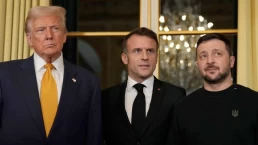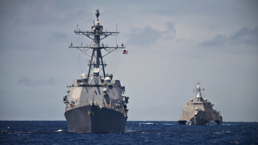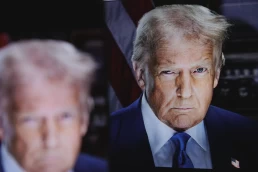For some liberals, Donald Trump’s decision to humiliate Volodymyr Zelensky showed that he’s a Russian stooge. But Trump’s crudeness is just a more striking illustration that Ukraine’s future is subject to US realpolitik.
By Ingar Solty, Jacobin
The horrific war in Ukraine is, in several senses, a lesson in imperialisms: classic versus new, formal versus informal, dumb versus smart. But it is also a general lesson in epistemologies, in the keys that we use to read the world, and their usefulness or otherwise. As such, they reveal intellectual, political, and moral bankruptcies.
Once Russia invaded Ukraine, many seemed determined to deduce Russia’s war aims from its sentimental-ultranationalist folklore oriented toward the home front (and pleasing it) rather than examine Russia’s recent history, political economy, its position in the international arena of geopolitics and empire, and its concrete military-strategic approach to Ukraine. This choice, including by many on the Left, meant rejecting solid materialist analysis in favor of cheap discourse analysis, which happened to be in line with Western liberal state propaganda.
Those professionals who would rather look at what is being said instead of what is being done observed that Russian president Vladimir Putin had called the collapse of the Soviet Union the greatest tragedy of the twentieth century and had questioned Ukraine’s status as an independent nation-state. They concluded that Russia was obviously not only about to swallow up all of Ukraine but is eventually going to attack the rest of the post-Soviet world, including non-NATO states like Georgia, Moldova, and Kazakhstan, and even NATO ones like the Baltic states and their Russian minorities.

The discourse analysts engaged in this kind of fearmongering and legitimization of Western militarization not only despite the obvious gap between alleged will and capability. They have kept spinning that narrative despite the additional and obvious contradiction that — much like the Russian historical record of (geo-)political interests and verbalized demands — the Russian military-strategic approach at the beginning of the war pointed to rather different war aims.
Few would set about to conquer a nation-state of, at the time, still forty-four million people and 233,000 square miles, which is almost twice the size of Germany, with 190,000 soldiers. By comparison, in 1939, Nazi Germany invaded Poland (which was comparatively smaller in size and population and much less well defended) with 1.5 million soldiers who were supported by air attacks conducted by almost nine hundred air-raiding bombers and more than four hundred fighter planes. When Germany started its war of annihilation against the Soviet Union, it deployed three million soldiers, the largest invasion force assembled in world history, which nevertheless soon fortunately failed in its objectives.
Recent Posts
Trump Declares Naval Blockade Against Venezuela As Lawmakers Warn Of Unauthorized Act Of War
December 17, 2025
Take Action Now President Trump’s order to block sanctioned oil tankers near Venezuela escalates military tensions, raises constitutional and…
Democratic Governance Depends On Stable, Affordable Housing
December 16, 2025
Take Action Now A population that cannot afford to stay in one place cannot build civic associations, and a society without civic associations cannot…
The Lobby Is Milking The Bondi Beach Attack To Silence Critics Of Israel’s Genocide
December 16, 2025
Take Action Now It is years of dedicated work by the Israel lobby that has ensured the mass murder of Palestinians is viewed by governments, the…
White House Refuses To Rule Out Summary Executions Of People On Its Secret Domestic Terrorist List
December 15, 2025
Take Action Now The Trump administration ignored questions about whether it would order the killings of those on its NSPM-7 list — even while…




